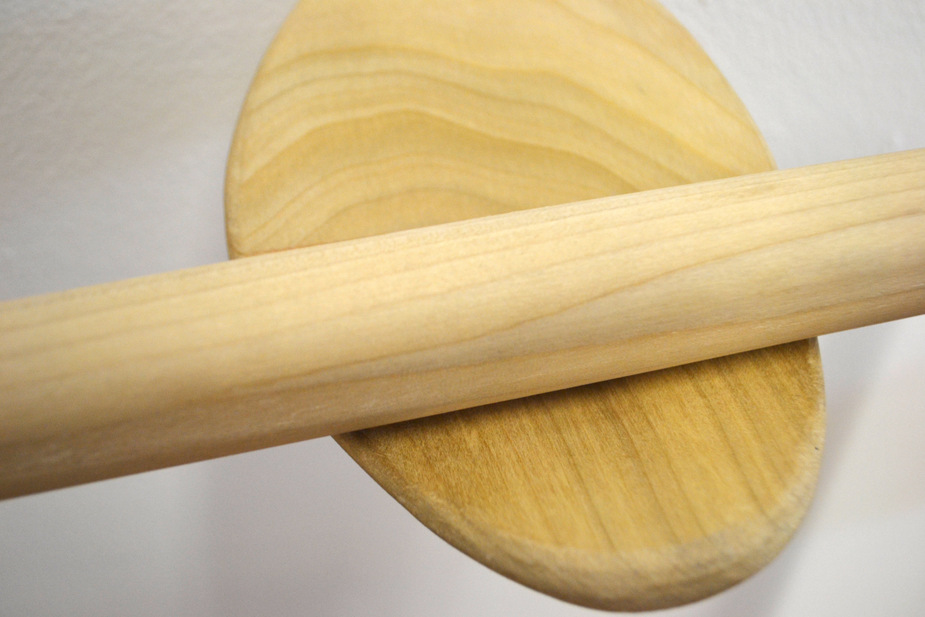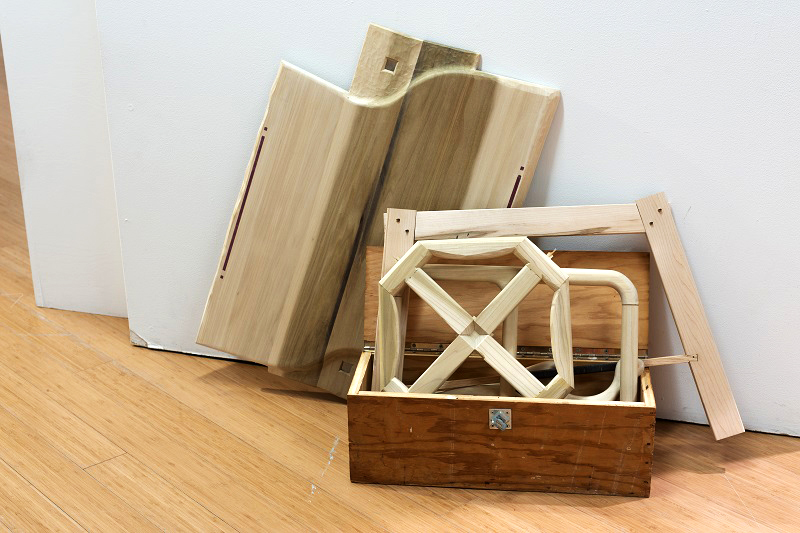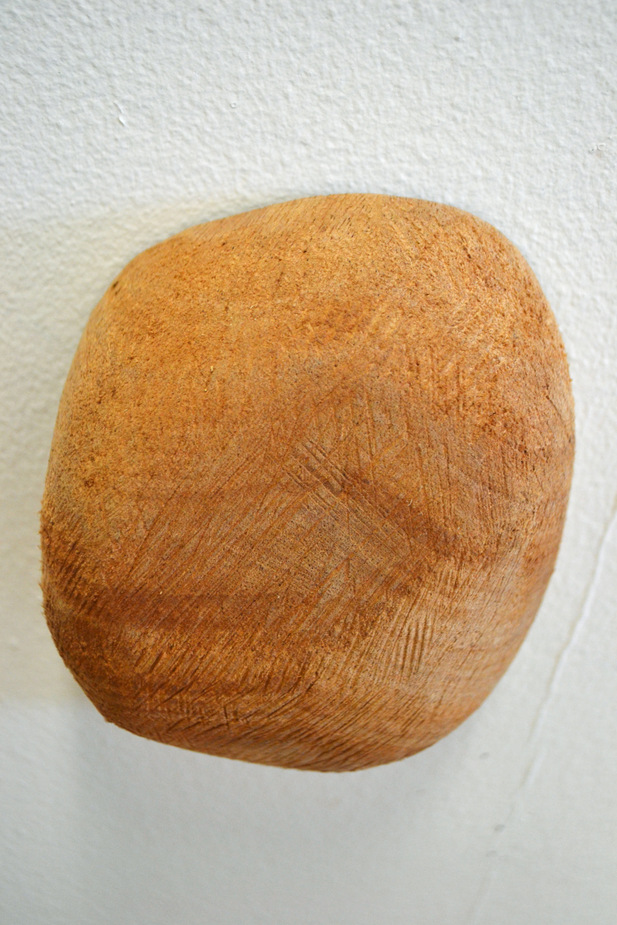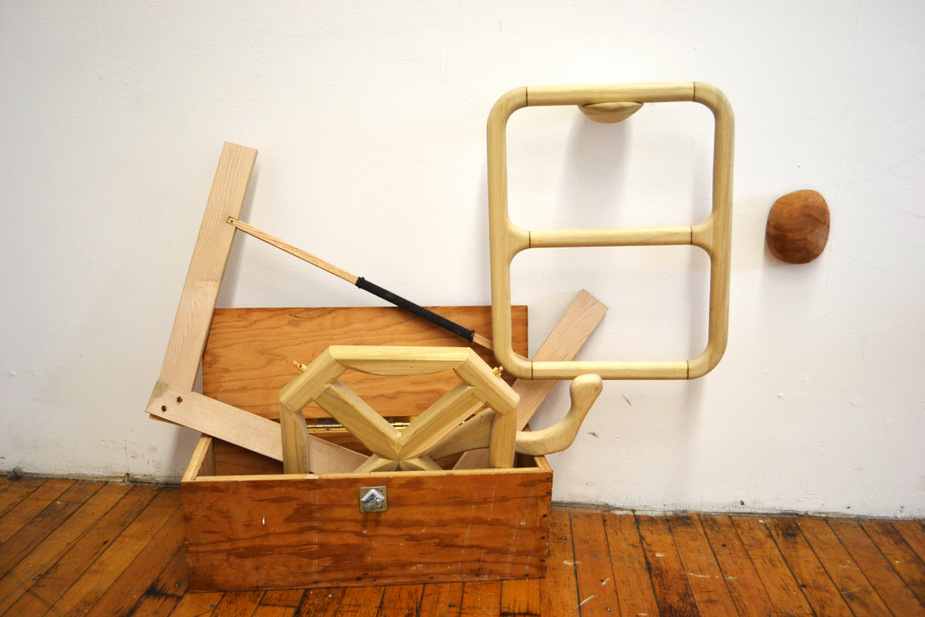Playthings
Monday, January 6th, 2014 @ 11:32 pm
plaything, relational, sculpture, tool, toy, wood
I began the semester wondering what I’d make. Last year I made a few interactive pieces, trying to address the intangible connection people can form. From laying on their backs in the dark, simply knowing someone else is there, to tapping on the back of a chair from someone sitting behind you. Not annoying or unnerving, more comforting, these are moments I at least can relate to as an unspoken sense of connectedness, of not-aloneness, that are fairly common in everyday life. But extremely hard to communicate in any focused way. In fact the focus itself seems to take away much of what makes the sense of connection seem so valuable or genuine in the first place.

Last year I took a large log, carved sections out of it to provide holds, areas I found comfortable, with which to hold the object. It provided a means of interaction, of getting to know the thing in my lap. I left it on a stool in a walled-off corner, and wrote on the wall “Hold Me How You Like,” in the hopes that people would find a moment to go back there, on their own, and find a way to be comfortable with an unknown, unfamiliar thing. Negotiating mental and emotional space for something new and unusual in ourselves is something I’ve heavily investigating.

What I came up with this semester began as a sort of fluke; I drew one of these objects (the rectangular hanging one, in the photo below), intending it to be large and in the center of a room. I made this smaller mockup to see what it would look like. I took my time making it, methodically going to the woodshop to get the next few cuts done and back to my studio to glue them up and set them aside for the next day’s work. I was able to take my time, to look at the proportions, feel the size and weight of it in my hands, and add a little flair with the red streaks. These decisions made people glad about the object, they didn’t know what it was but they were convinced of its deserving to be. It was considered in its making, and so it must be something to somebody. And that seemed to negate the dissatisfaction and confused reactions I’d received over my log piece from last year. This thing made sense, from start to finish, and though it didn’t answer the question of “what am I” people were interested to figure that out, and weren’t put off by preconceptions. None of their preconceptions about usable (or “handle-type”) objects were contradicted, so they engaged. That surprised me.

People also said they liked the tool marks. Not the marks of my presence necessarily, but the marks of a maker’s presence. The objects don’t have to be finished or “perfected,” just convincing, completed. The object above got good response in its unfamiliarity to anything we see in architecture, but familiarity to body forms, and the meshing of the two. I’m not by any stretch the first to do this, and I wasn’t surprised, but it pushed the point that newness and changing expectations, without beating at them, is what made people more interested in my objects. The log was blatantly a log, and my chair was blatantly a chair. This thing above looks like a knee in a wall, and it’s fuzzy, and scratched all over. Mysterious.

Comments
Thoughts on the stuff you read? You can leave a response, or trackback from your own site.
Leave a Reply